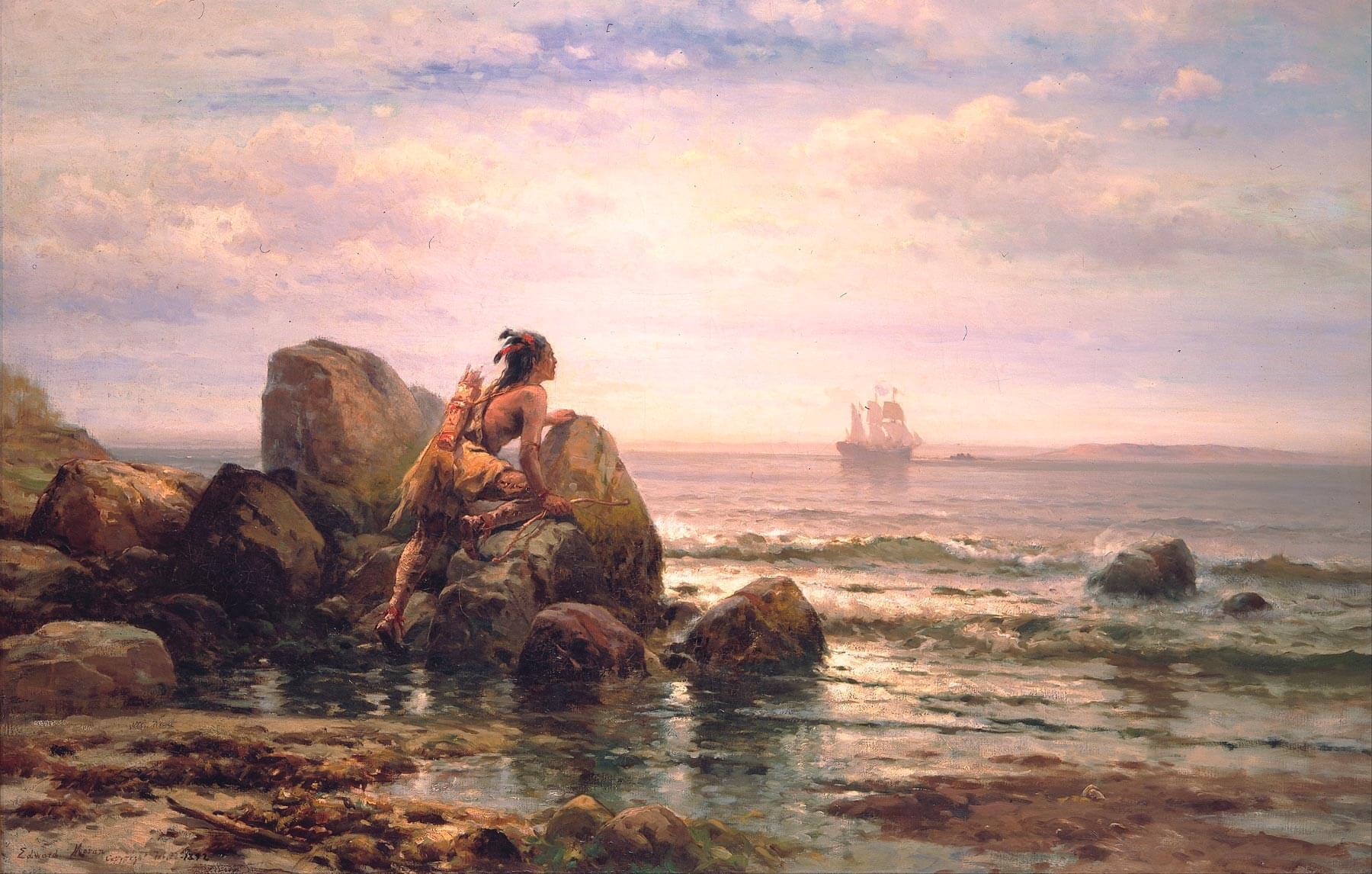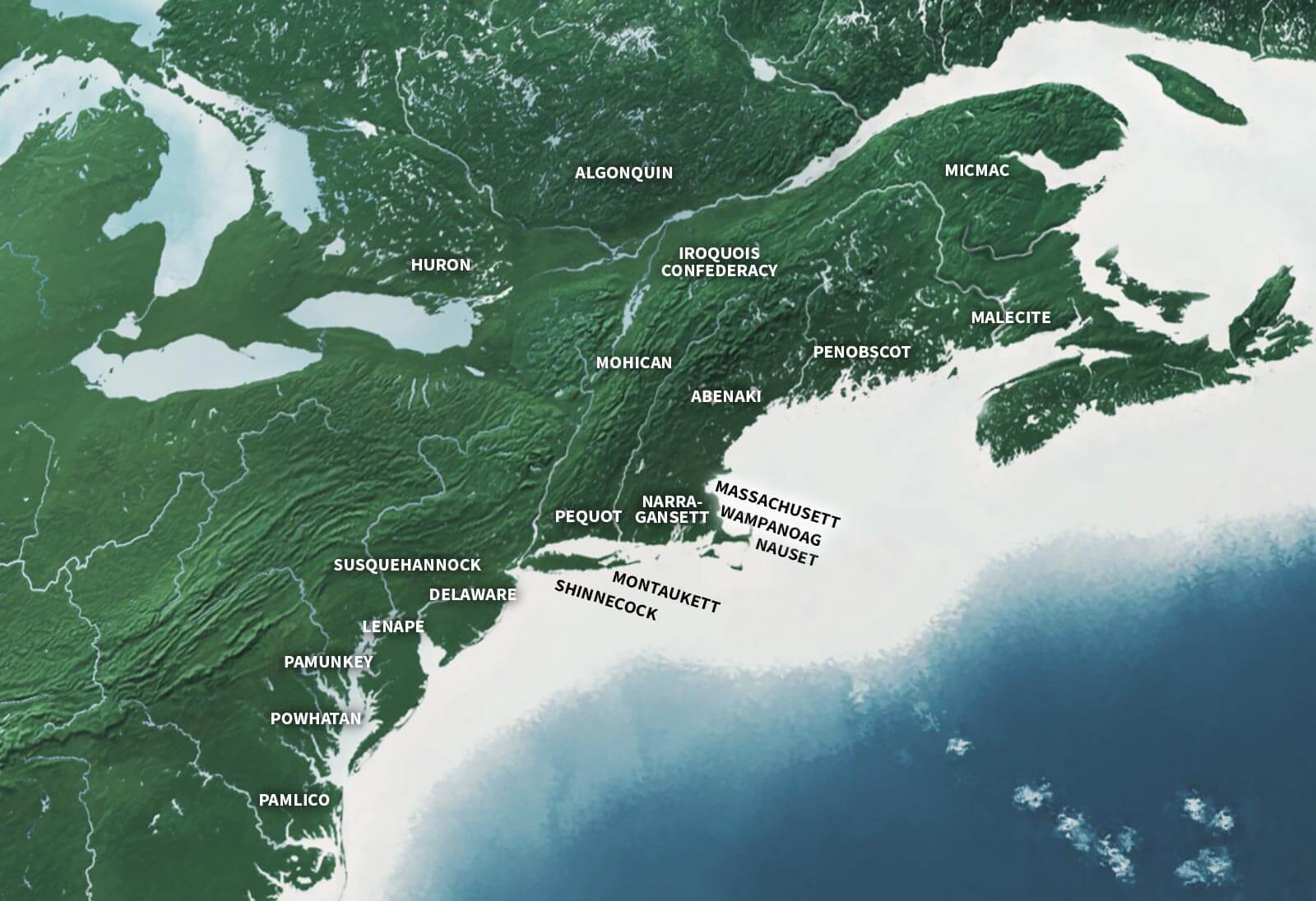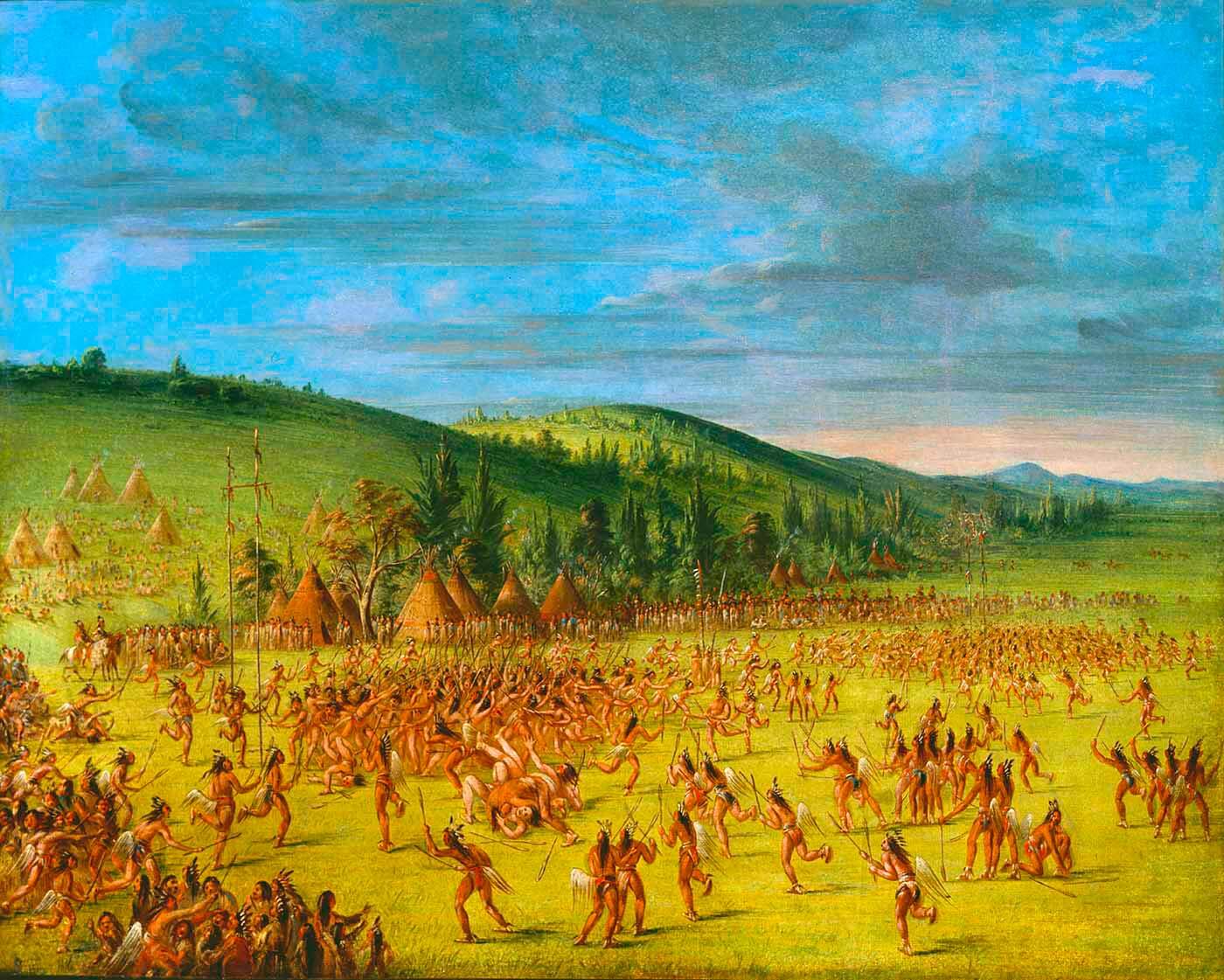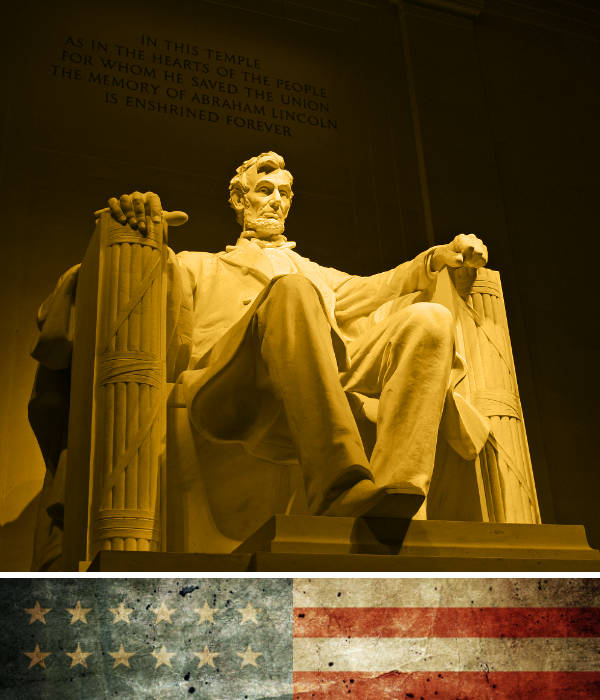Sunset in the Dawnlands
Native life on the Atlantic seaboard

That which is common to all is proper to none. This savage people rule over many lands without title or property; for they enclose no ground, neither have they cattle to maintain it, but remove their dwellings as they have occasion, or as they can prevail against their neighbours. And why may not Christians have liberties to go and dwell among them in their waste lands and woods, leaving them such places as they have manured for their corn, as lawfully as Abraham did among the Sodomites?
John Winthrop
Once there were so many people, so many peoples, all packed into the densely-wooded eastern seaboard of the North American continent, from modern-day North Carolina right up to Nova Scotia, and reaching inland to the Appalachian Mountains and the shores of Lake Erie and Ontario. Although sparsely-populated by today's standards, around 300,000 native Americans roamed these forests and estuaries, bogs and beaches, in an ever-changing kaleidoscope of motion and settlement. They built towns and villages, some lasting barely a season and others firmly embedded into the soil of fortified hilltops. There were tribes of wildly varying name and custom, living and warring, hunting, fishing and growing, a multitude of beliefs, allegiances and identities, but many of them shared a name, of sorts: the People of the Dawn.
Giovanni da Verrazzano, the Florentine explorer sailing in the service of the French King, left us our earliest account of these people. He and his crew were approached by twenty native canoes in Narangansett Bay (modern-day Rhode Island), and once boarded by these curious natives they spent over two weeks as their guests: Verrazzano wrote of their sachem that he was as beautiful of stature and build as I can possiblydescribe.
Further up the coast their welcome was less warm, and after trading with some more wary Abenaki in Maine, who would not even allow the European ships to land, the locals concluded proceedings by showing their buttocks and laughing
. The Abenaki may already have had good reason to distrust such visitors: in 1501 Portuguese sailor Gaspar Corte-Real snatched over 50 from Maine, two of whom he maintained possessed items that could only have come from Venice. By 1600 hundreds of European vessels regularly plied the waters off the north-Atlantic coasts, but aside from brief forays ashore for food, water, and the occasional captive, none had set foot in this vast and unfamiliar wilderness.
They would have found a world of magic and ritual, of dreams and spirits, of shamans, sorcerors and soothsayers (which wouldn't differentiate it too much from contemporary London of course), of cultures and customs handed down over thousands of years, of mini-kingdoms and vast confederacies, communal villages and finely-structured matrilinear societies. There were two main language groups, the Algonquian along the coast down to North Carolina, and the Iroquois inland towards the Great Lakes, and countless dialects, not always mutually intelligible. And for all the patchwork of loyalties and practices, of foragers and fur traders, farmers and whalers, all shared and celebrated the thirteen lunar months of the year, the cycle of planting and harvest, the natural bounty they had lived off and in since time immemorial, since they were shaped by their Creator from the very clay of the land they still roamed.

And they were well-shaped, as visitors often noticed. They were taller than their European counterparts, better fed on fresher and more varied diets, their bodies and bones spared the starvation, filth and disease that beset old world cities. Infant mortality was high (about 30%), but those that reached 15 had a life expectancy of around 35, not much less than the English of the time. These were people who had long ago adapted themselves to their environment, who manufactured clothes of deerskin, or cloaks of fur and feathers to see them through the harsh winters, who knew to rub animal fat into their skin to protect them from the cold, or in summer from the biting insects. Childhoods were longer, with more time for playing, developing, and learning how to live and hunt (they began practicing with the bow and arrow as young as two years old), but when boys came of age they were often left alone in the forest for an entire winter to survive with only a bow, a hatchet and a knife.
Socially they valued honest and stoic resilience: as English colonist William Wood reported, He that speaks seldom and opportunely, being as good as his word, is the only man they love
. Men were expected to display an almost reckless physical courage. Warpaint was a mark of a warrior's exploits, designed to make them more visible, more of a target, to prove their indifference towards death. Conflict was commonplace, and though surprise guerilla raids prevailed over pitched battles, with comparatively light losses, the violence was very real. Women and children might often be kept by their captors, incorporated into the new tribe at varying levels of stature, but men were often tortured, scalped, disembowelled, even eaten, unless they were fortunate enough to be subjected to humiliating servitude. The main casualty was status, a blow to the tribe's prestige, and pesistent internecine warfare was never severe enough to prevent the overall population steadily rising, until there were some 100,000 living within the Dawnlands.
With so many mouths to feed it was a rare tribe that could live by hunting and foraging alone, few who did not rely upon the bounty of the soil and farming to see them through the harsh winters. The universal staples were the 'three sisters', corn, beans and squash. These three were often planted together, to their mutual benefit: the corn seed was planted in a small heap of dirt, to which beans and squash were added. The shoots of bean and squash would wind their way up the corn stalks, which allowed the beans to reach bright sunlight and in return impart valuable nitrogens to the soil below. For its part, the squash played defence, sprouting broad and spiky leaves that deterred would-be predators from an otherwise easy meal. And while these were the foundation of native diets - a single woman (for it was usually women who farmed) could meet half a family's calorific needs just from the corn from an acre or two – native Americans also grew pumpkin, passionfruit, artichoke and tobacco. Agricultural tools were crafted from crab shells, clams and turtles, or the shoulder blades of deer, and children set to the task of playing scarecrow (although the Narangansett also trained tamed hawks to chase birds from their fields). Communities relied upon their farming yields, and as soil fertility decreased over the years, so they would uproot their entire villages and move on to more bountiful fields nearby.
We have discovered… the goodliest soil under the cope of heaven, so abounding with sweet trees, that bring such sundry rich and pleasant gums, grapes of such greatness, as France, Spain, nor Italy have no greater… the continent is of huge and unknown greatness, and very well peopled and towned, though savagely, and the climate so wholesome, that we had not one sick since we landed here.
Ralph Lane, letter from the Roanoke Colony
The men devoted themselves to the prouder and more martial arts of hunting and fishing, at which these many tribes excelled. They were adept at disguising their shape, their sounds, and their smell as they moved through the forests, practiced at imitating various animal calls and skilled in trapping, from snares large enough to snag a deer to deadfall log traps that could crush a fully-grown bear. They would drive herds or prey towatds cliff-edges and riversides, or into narrow 'V'-shaped enclosures to slaughterthem at the crowded apex. Equally proficient as fishermen, they fashioned needle-sharp hooks and harpoon points from bone, and would take to the seas in their dugout canoes (their vast frames hewed from tree trunks, wrapped in paper-birch bark, and caulked with deer fat) to catch sea bass, bluefish, seals and even whales. They would hoard food for leaner months in great storage pits, 7-8 feet in diameter, while fish was smoked to preserve it and meat packed into pine troughs lined with ice and straw. Their weapons, of hunting and war, were fearsome: hatchets with blades of chipped stone and flint-studded war clubs, and thin stone-bladed knives. Their bows were up to 5-6 feet tall, with strings of sinew or twisted strips of deer hide. While their pull was less than half that of an English longbow they had a range of some 200m, and were extremely accurate up to 50m - an arrow that killed a Frenchman in Cape Cod in 1606 was fired with enough force to go straight through him and pin his pet dog to his body.
While these tribes had their own territories, their own hunting and fishing camps and farms, their world was connected by the great rivers and a dense network of forest pathways supporting a central thoroughfare, the Great Catawba War Path, that ran from Western New York all the way down to the Mississippi Valley and Florida. Long-distance trade was fuelled by wampum, clamshells worked into uniformly-sized discs of white, blues and purples and crafted into intricate belts. This was supercharged by the arrival of European metal tools, glass beads, and finely-worked copper and brass pendants, and by European demand for furs. As the French advanced their trading stations up the St Lawrence River after Cartier's 1534 voyage, so the Iroquois Confederacy pushed outwards, expanding its sphere of control to monopolise the European trade. As their hunters pursued smaller game with higher-value pelts, and their women devoted time and effort to preparing those pelts for exchange, so hunting yields and agricultural stocks diminished, and wars between rival groups became more savage, propelled by the value of these new imports. Tribal allegiances and the dynamic of commerce shifted as the epicentre of the Dawnlands pivoted towards the west, towards these boats hovering offshore harvesting fish and furs and timbers, and trading in their unknown wonders of glass and metal that quickly conferred the same cultural and spiritual value as wampum.

They brought more than that. We're still not sure precisely what plague ripped through New England and the Algonquian tribes between 1616 and 1619. It may have been the bubonic plague, or smallpox, or yellow fever: sporadic accounts of survivors and autopsies hundreds of years after that fact can render no conclusive verdict. It could have been chickenpox, or trichinosis, or leptospirosis that swept from village to village, tribe to tribe, killing over 90% of those it infected. It might have been influenza, typhus or hepatitis that brought headaches and fever, yellowed skin, outbreaks of lesions and scabs, and caused blood to pour in torrents from their noses. Whatever it was, its impact was cataclysmic. Captain John Smith's account of the New England coast in 1616 records large corne fields, and great troupes of well proportioned people
. Three years later Thomas Dermer observed only some ancient Plantations, not long since populous now utterly void; in other places a remnant remaines, but not free of sickness.
Villages lay in ruins,
wrote Dr Howard Simpson, because there was no-one to tend them. The ground was strewn with the skulls and the bones of thousands of Indians who had died and none was left to bury them.
.
The forests were abruptly, irrevocably depopulated, and the shores scoured clean, the villages emptied and abandoned. Fields lay untilled and bodies unburied. The Dawnlands were a scorched earth, a mass graveyard in which some sporadic and bemused survivors struggled to make sense of their new landscape and the transformed balance of power. And quickly. Because new peoples were coming.
Few even wish they could read
the lost annals
of a cudgelled people
W. H. Auden City Without Walls
Bibliography
- Bailyn, B. (2012) The Barbarous Years: The Peopling of British North America: The Conflict of Civilizations, 1600-1675. New York: Alfred A. Knopf.
- Bratton, T. (1988). The Identity of the New England Indian Epidemic of 1616–19.' Bulletin of the History of Medicine, 62(3), 351-383.
- Brogan, H. (2001) The Penguin History of the United States of America. 2nd ed. London: Penguin.
- Hakim, J. (2003) Making Thirteen Colonies - 1600-1740. 3rd ed. New York: Oxford University Press.
- Loewen, J. (2018) Lies My Teacher Told Me. New York: Simon & Schuster.
- Mann, C. (2005). 'Native Intelligence.' Smithsonian Magazine, volume 36 (9).
- Mooney, J. (1907) 'The Powhatan Confederacy, Past and Present.' American Anthropologist, 9(1), 129-152.
- Silva, C. (2008). 'Miraculous Plagues: Epidemiology on New England's Colonial Landscape.' Early American Literature, 43(2), 249-275.

